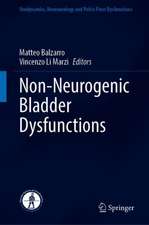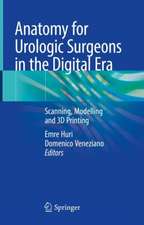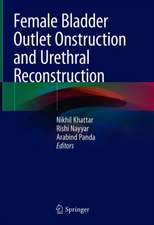Gasless Single-Port RoboSurgeon Surgery in Urology
Editat de Kazunori Kiharaen Limba Engleză Paperback – 23 oct 2016
| Toate formatele și edițiile | Preț | Express |
|---|---|---|
| Paperback (1) | 773.28 lei 38-44 zile | |
| Springer – 23 oct 2016 | 773.28 lei 38-44 zile | |
| Hardback (1) | 733.82 lei 3-5 săpt. | |
| Springer – 7 aug 2015 | 733.82 lei 3-5 săpt. |
Preț: 773.28 lei
Preț vechi: 813.98 lei
-5% Nou
Puncte Express: 1160
Preț estimativ în valută:
148.01€ • 160.83$ • 124.41£
148.01€ • 160.83$ • 124.41£
Carte tipărită la comandă
Livrare economică 17-23 aprilie
Preluare comenzi: 021 569.72.76
Specificații
ISBN-13: 9784431561699
ISBN-10: 4431561692
Pagini: 184
Ilustrații: XIII, 184 p. 372 illus., 160 illus. in color.
Dimensiuni: 210 x 279 mm
Ediția:Softcover reprint of the original 1st ed. 2015
Editura: Springer
Colecția Springer
Locul publicării:Tokyo, Japan
ISBN-10: 4431561692
Pagini: 184
Ilustrații: XIII, 184 p. 372 illus., 160 illus. in color.
Dimensiuni: 210 x 279 mm
Ediția:Softcover reprint of the original 1st ed. 2015
Editura: Springer
Colecția Springer
Locul publicării:Tokyo, Japan
Cuprins
Acknowledgments.- Preface.- Chapter 1:Fundamentals of Gasless Single-Port RoboSurgeon Surgery.- Chapter 2:Gasless Single-Port RoboSurgeon Retroperitoneoscopic Radical Nephrectomy.- Chapter 3:Gasless Single-Port RoboSurgeon Retroperitoneoscopic Partial Nephrectomy.- Chapter 4:Gasless Two-Port Access RoboSurgeon Retroperitoneoscopic Radical Nephroureterectomy.- Chapter 5:Gasless Single-Port RoboSurgeon Retroperitoneoscopic Adrenalectomy.- Chapter 6:Gasless Single-Port RoboSurgeon Retroperitoneoscopic Radical Prostatectomy.- Chapter 7:Gasless Single-Port RoboSurgeon Total Cystectomy with Urinary Diversion.- Chapter 8:Gasless Single-Port RoboSurgeon Partial Cystectomy: A Hybrid Technique Combining an Intravesical and Extravesical approach.- Chapter 9:Gasless Single-Port RoboSurgeon Retroperitoneoscopic Pelvic Lymph Node Dissection and Inguinal Hernia Prevention.- Chapter 10:Application of the RoboSurgeon System in Medical Care.
Notă biografică
Kazunori Kihara, M.D., Ph.D.
Director
Tokyo Medical and Dental University Hospital
Professor and Chairman
Department of Urology, Graduate School,
Tokyo Medical and Dental University
Director
Tokyo Medical and Dental University Hospital
Professor and Chairman
Department of Urology, Graduate School,
Tokyo Medical and Dental University
Textul de pe ultima copertă
This book focuses on a novel series of minimally invasive surgeries performed without gas insufflation and through a single port using the RoboSurgeon system. The concept of RoboSurgeon surgery involves a degree of “robotization” of the operator and participants. The operator, wearing a head-mounted display, uses robot-like handheld instruments. The endoscope is controlled by the movement of the operator’s head using a gyro-sensor system. All participants wearing head-mounted displays can see the same images as the operator does. Although this surgery is mainly intended for urological cancers, it may also be applicable for various operations concerning other urological diseases, as well as for the treatment of diseases in different medical fields. The system has the potential to become the new standard in robotic surgery. This solution may be a boon to many patients around the world, especially in the aging societies many countries are now facing.
Caracteristici
Provides an overview of a breakthrough minimally invasive urological surgery, developed in Japan Presents a technique that will rapidly gain acceptance around the world Explains how this surgery not only offers major advantages over current robotic surgery but also has the potential to remedy its drawbacks ? Includes supplementary material: sn.pub/extras

























